Unknown Unknown Date 516 AD | Unknown Unknown | |
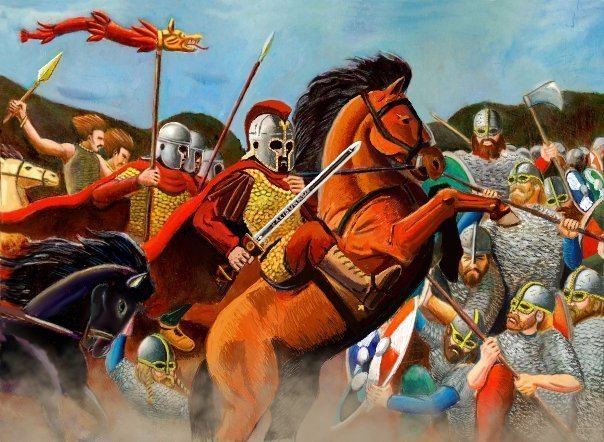 | ||
Result Strategic British victory; Saxon expansion halted for many decades Similar Battle of Camlann, Battle of Deorham, Battle of Chester, Battle of Catraeth, Battle of Heavenfield | ||
Arthur and tristan vs cerdic to the battle of badon hill english version
The Battle of Badon (Latin: Bellum in monte Badonis or Mons Badonicus, Welsh: Cad Mynydd Baddon, all literally meaning "Battle of Mount Badon" or "Battle of Badon Hill") was a battle thought to have occurred between Britons and Anglo-Saxons in the late 5th or early 6th century. It was credited as a major victory for the Britons, stopping the encroachment of the Anglo-Saxon kingdoms for a period. It is chiefly known today for the supposed involvement of King Arthur, a tradition that first clearly appeared in the 9th-century Historia Brittonum. Because of the limited number of sources, there is no certainty about the date, location, or details of the fighting.
Contents
- Arthur and tristan vs cerdic to the battle of badon hill english version
- Barbarian invasion historical battle of badon hill very hard
- Siege of Mount Badon
- Scholarship
- Aftermath
- Second Badon
- Local lore
- References
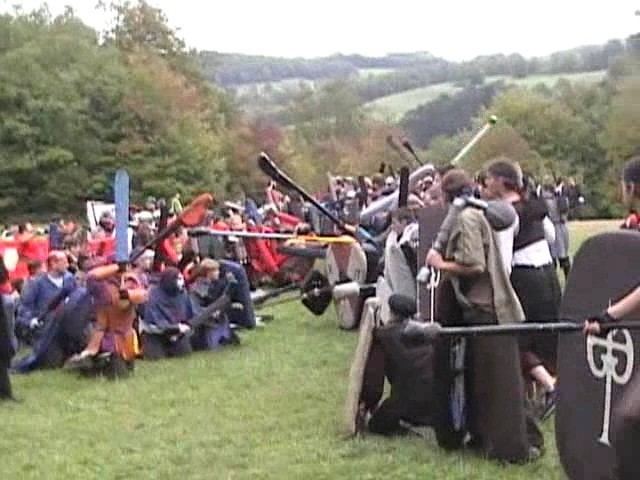
Barbarian invasion historical battle of badon hill very hard
Siege of Mount Badon
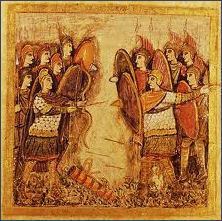
The earliest mention of the Battle of Badon is Gildas' De Excidio et Conquestu Britanniae ("On the Ruin and Conquest of Britain"), written in the early to mid-6th century. In it, the Anglo-Saxons are said to have "dipped [their] red and savage tongue in the western ocean" before Ambrosius Aurelianus organized a British resistance with the survivors of the initial Saxon onslaught. Gildas describes the period that followed Ambrosius' initial success:

From that time, the citizens were sometimes victorious, sometimes the enemy, in order that the Lord, according to His wont, might try in this nation the Israel of to-day, whether it loves Him or not. This continued up to the year of the siege of Badon Hill (obsessionis Badonici montis), and of almost the last great slaughter inflicted upon the rascally crew. And this commences, a fact I know, as the forty-fourth year, with one month now elapsed; it is also the year of my birth.
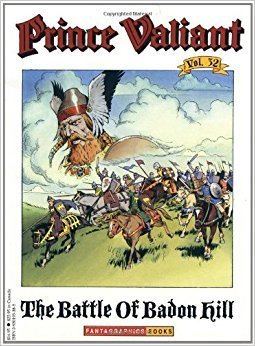
The Ruin of Britain is unclear as to whether Ambrosius is still leading the Britons at this point, but describes the battle as such an "unexpected recovery of the [island]" that it caused kings, nobles, priests, and commoners to "live orderly according to their several vocations" before the long peace degenerated into civil wars and the iniquity of Maelgwn Gwynedd. Passages of The Ruin of Britain that address Maelgwn directly are sometimes employed to date the work from accounts of the king's death by plague in the 540s, but such arguments ignore the obvious apostrophe employed in the passages and the possible years of composition involved in the final collected sermon.
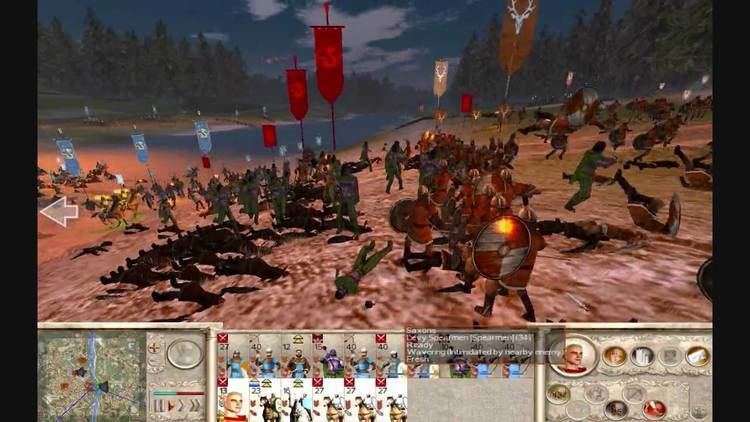
The battle is next mentioned in an 8th century text of Bede's Ecclesiastical History of the English People. It describes the "siege of Mount Badon, when they made no small slaughter of those invaders," as occurring 44 years after the first Anglo-Saxon settlement of Britain. Since Bede places that arrival during or just after the joint reign of Marcian and Valentinian in AD 449–456, he must have considered Badon to have taken place between 493 and 500. Bede then puts off discussion of the battle – "But more of this hereafter" – only to seemingly never return to it. Bede does later include an extended account of Saint Germanus's victory over the Saxons and Picts in a mountain valley, which he credits with curbing the threat of invasion for a generation. However, as the victory is described as having been accomplished bloodlessly, it was presumably a different occasion from Badon. (Accepted at face value, St. Germanus's involvement would also place the battle around 430, although Bede's chronology shows no knowledge of this.)
The earliest surviving text mentioning Arthur at the battle is the early 9th century Historia Brittonum, in which the soldier (Latin mīles) Arthur is identified as the leader of the victorious British force at Badon:
"The twelfth battle was on Mount Badon in which there fell in one day 960 men from one charge by Arthur; and no one struck them down except Arthur himself".
The Battle of Badon is next mentioned in the Annales Cambriae ("Annals of Wales"), assumed to have been written during the mid- to late-10th century. The entry states:
The Battle of Badon, in which Arthur carried the Cross of our Lord Jesus Christ for three days and three nights upon his shoulders [or shield] and the Britons were the victors".
That Arthur had gone unmentioned in the source closest to his own time, Gildas, was noticed at least as early as the 12th century hagiography that claims that Gildas had praised Arthur extensively but then excised him completely after Arthur killed the saint's brother, Hueil mab Caw. Modern writers have suggested the details of the battle were so well known that Gildas could have expected his audience to be familiar with them.
Geoffrey of Monmouth's c. 1136 Historia Regum Britanniae was massively popular and survives in many copies from soon after its composition. Going into (and fabricating) much greater detail, Geoffrey closely identifies Badon with Bath, including having Merlin foretell that Badon's baths would lose their hot water and turn poisonous. He employs aspects of other accounts, mixing them: the battle begins as a Saxon siege and then becomes a normal engagement once Arthur's men arrive; Arthur bears the image of the Virgin both on his shield and shoulder. Arthur charges, but kills a mere 470, ten more than the number of Britons ambushed by Hengist near Salisbury. Elements of the Welsh legends are also added: in addition to the shield Pridwen, Arthur gains his sword Caliburnus and his spear, Ron. Geoffrey also makes the defence of the city from the Saxon sneak attack a holy cause, having Dubricius offer absolution of all sins for those who fall in battle.
Scholarship
Separate sources dating the concession of Thanet to Hengist to 447 would place The Ruin of Britain and Bede's account of the battle around the year 491. The Anglo-Saxon Chronicle is completely silent about this battle but does seem to document a gap of almost 70 years between two major Anglo-Saxon leaders (bretwaldas) in the fifth and sixth centuries.
If Rhigyfarch's celebrated Life of David is credited, its account of Saint David's ten years of education under Paul Aurelian suggests David could not have been born later than 514. Since the same account has Gildas preaching to Saint Non while she was pregnant with David, it is improbable that Gildas's birth – and therefore the battle – could have occurred later than 498.
McCarthy and Ó Cróinín propose Gildas's 44 years and one month is not a reference to the simple chronology but a position within the 84-year Easter cycle used for computus at the time by the Britons and the Irish church. The tables in question in January 438, which would place their revised date of the battle in February 482.
Hirst, Ashe and Wood argue for the site of Liddington Castle on the hill above Badbury (Old English: Baddan byrig) in Wiltshire. This site commands The Ridgeway, which connects the River Thames with the River Avon and River Severn beyond.
Aftermath
The early sources' account that the Saxons were thrown back around this time seems to be borne out by archaeological evidence. Studies of cemeteries (at this point, the Anglo-Saxons remained pagan while the Britons were Christianized) suggest the border shifted some time around 500. Afterwards, the pagans held the present areas of Kent, Sussex, Norfolk and Suffolk, and the area around the Humber. The Britons seem to have controlled salients to the north and west of London and south of Verulamium in addition to everything west of a line running from Christchurch at the mouth of the Wiltshire Avon north to the Trent, then along the Trent to the Humber, then north along the Derwent to the North Sea. The salients could then be supplied along Watling Street, dividing the invaders into pockets south of the Weald in east Kent and around the Wash.
Second Badon
The A Text of the Annales Cambriae includes the entry: "The first celebration of Easter among the Saxons. The second battle of Badon. Morgan dies." The date for this action is given by Phillimore as 665, but the Saxons' first Easter is placed by the B Text in its entry 634 years after the birth of Christ and neither Second Badon nor Morcant are mentioned.
Local lore
Apart from the professional scholarship, various communities around Wales and England carry on local traditions that their area was the site of the battle: these include Bathampton Down; Badbury Rings at the Kingston Lacy House in Dorset; and Bowden Hill in Linlithgow.
